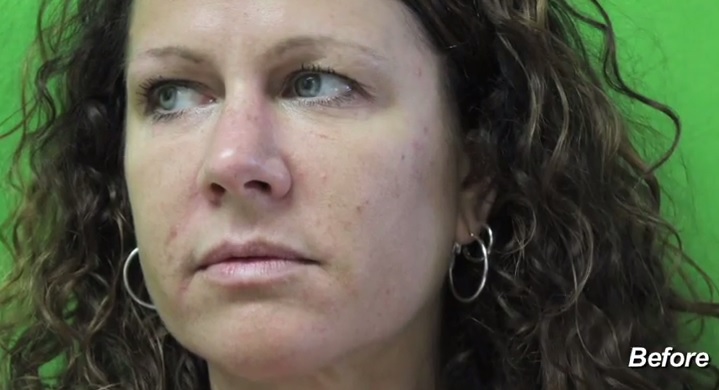Age spots. The term is somewhat of a misnomer, considering that the spots are not entirely caused by aging. While these spots are caused, in part, by the higher levels of melanin released with age, it must not be discounted that the melanin is pumped out as a natural form of skin protection—from the sun. And since, when we’re older, our skin can’t recover as well from UV rays, this overflow of melanin begins to band together into concentrated areas. These areas are age spots.
They commonly appear on the face, hands, chest, and shoulders as non-textured dots or clusters that are tan or brown in color. Other names for age spots include liver spots, brown spots, solar lentigines, and sun spots; the latter two seem more appropriate, considering these spots can occur before the age of 40 in people who are frequently in the sun.
Is There A Way To Get Rid of Age Spots?
The concentration of melanin—or melanocyte cells—can be broken up through various treatments for age spots. These include:
- -Hydroquinone cream: a skin-bleaching agent applied topically in 2% or 4% (prescription only) concentrations. It works by inhibiting the production of melanin. This treatment would have to be applied diligently over a period of six weeks to six months for results to be visible.
- -Laser treatment: Fraxel lasers and Spectra lasers are excellent at removing age spots. Fraxel is a resurfacing laser that works by removing the top layers of skin. If the discolored pigment is contained in the layer that is removed, then a visible result may occur. Spectra is a Q-switch ND YAG laser that is absorbed by the pigment itself. The pigment is then destroyed as a result, forming microscopic fibrous tissue around the destroyed pigment particles and further obscuring them. Each laser system uses a specific wavelength, suited to the individual, the skin tone, and the depth of the age spots. Depending on these factors, one or two treatments may be sufficient with either laser.
Preventative Measures for Age Spots
In sunny places like Los Angeles, preventing age spots may prove more difficult. But staying out of the sun and using sunscreen will at least aid in reducing the risk of getting them. Here are some things to do to prevent age spots:
- -Avoid UV rays as much as possible. This means limit tanning, outdoor sports, and outdoor exercise.
- -If you must take part in outdoor activities, wear a sunscreen of SPF 30 or greater. Wear a hat and cover your shoulders with a light-weight material.
- -We might mistakenly think we are safe from sun exposure while sitting in our cars. A pastime all too common in the heavy traffic of Los Angeles. Prevent age spots by simply having a UVA film put on your car windows.
And keep in mind that by limiting sun exposure, you’re not only reducing age spots, you’re also reducing wrinkles—another sign of aging exacerbated by sun exposure.

